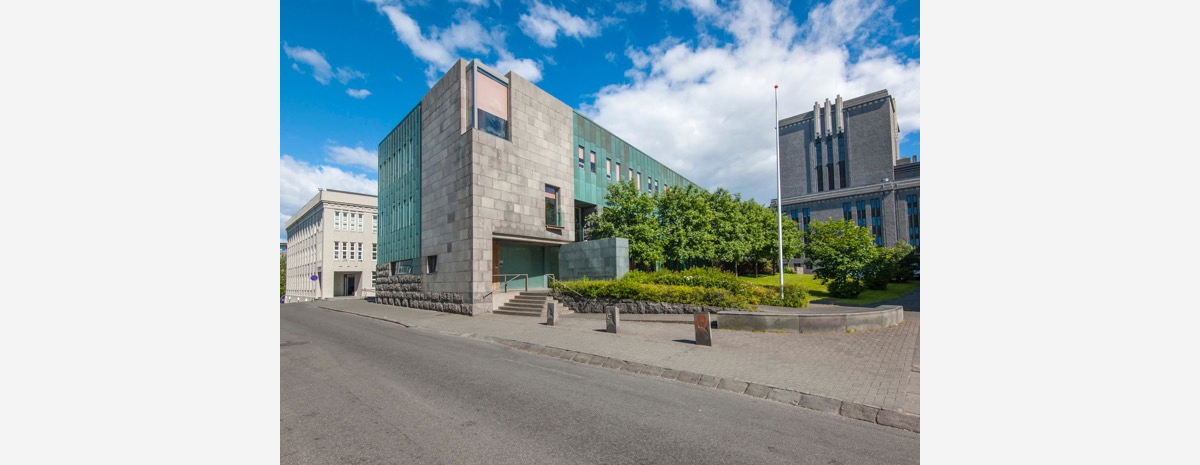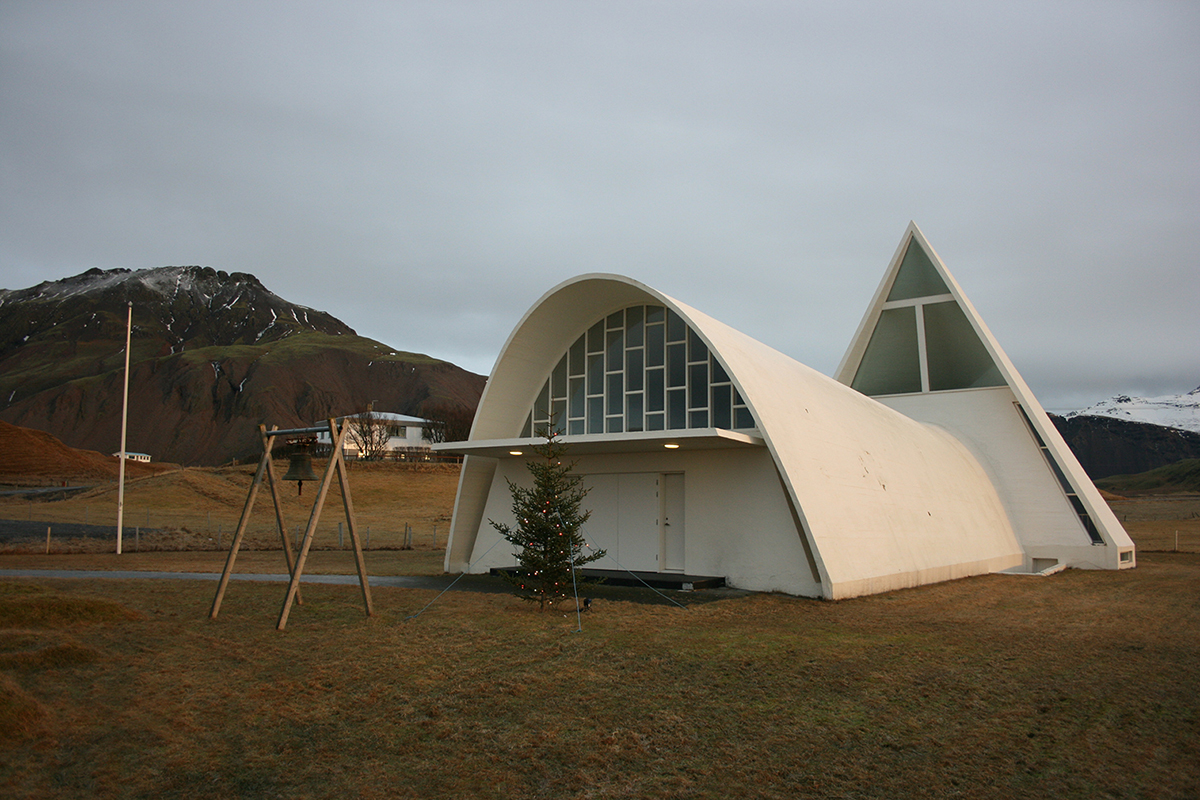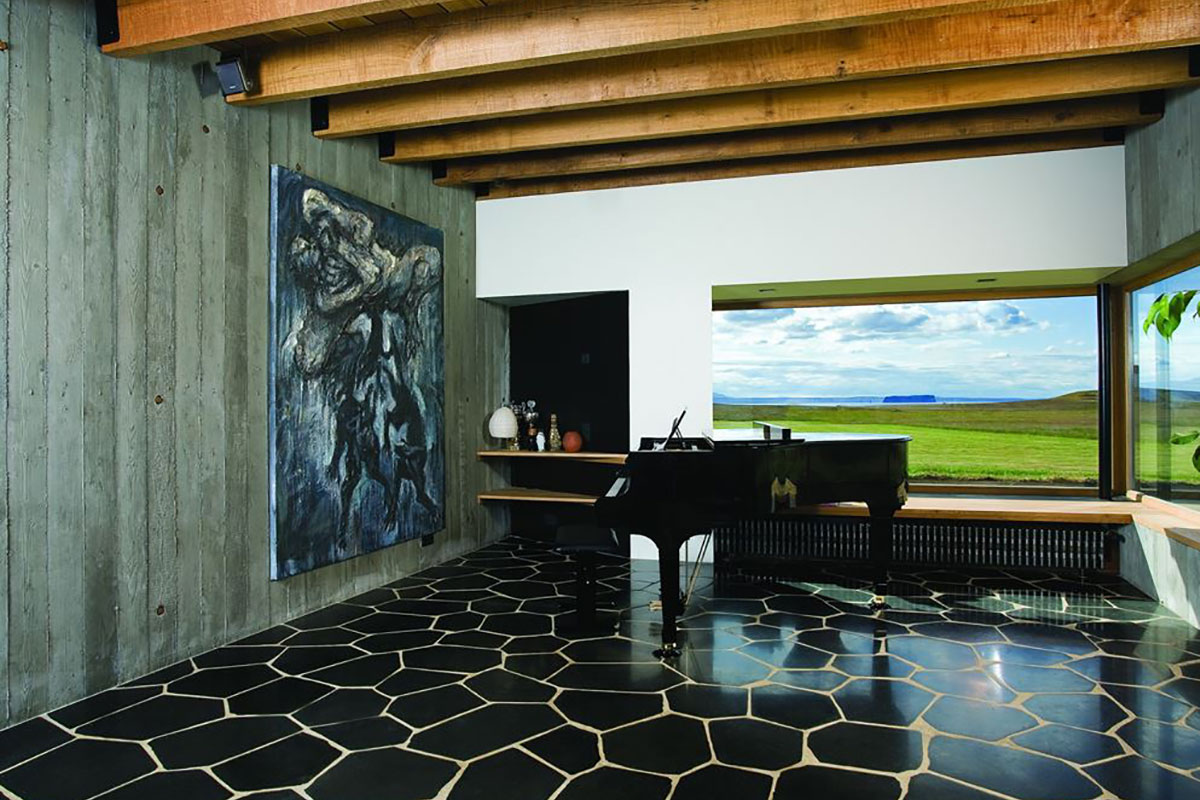Iceland’s architectural icons might not be as abundant as in other European nations due to its small population and relatively belated modernisation, but there are some extraordinary landmarks to be found across the country. Its charming, diminutive capital, Reykjavík, has the lion’s share of impressive buildings, ranging from 19th-century townhouses clad in colourful corrugated iron to modernist museums and the almighty, rocket-shaped Hallgrímskirkja.
But head out of the city and you will find a fascinating crop of idiosyncratic Icelandic architecture – churches, pools, municipal buildings – dotted across the island’s jaw-dropping volcanic landscape.
Here are 10 landmarks worthy of a pilgrimage, in the capital and beyond.
Hallgrímskirkja, Reykjavík

Reykjavík’s most famous religious landmark was designed by renowned state architect Guðjón Samúelsson. Started in 1945 and consecrated in 1986, its distinctive form was inspired by local basalt cliff formations and its 73-metre height makes it the tallest such structure in the country.
Hallgrímstorg 101, 101 Reykjavík, south Iceland
National Theatre of Iceland, Reykjavík

The austere National Theatre of Iceland was designed by Iceland’s first state architect Gudjón Samúelsson and has been a leading cultural institution since it opened in 1950. Inspired by Iceland’s basalt columns, it features three separate areas inside (Main Stage, Black Box, Workshop Stage) and premieres around 10-14 domestic and international plays each season.
Hverfisgata 19, 101 Reykjavík, south Iceland
Supreme Court of Iceland, Reykjavík

Set on a hill facing the sea, the Supreme Court is a compelling and provocative example of Icelandic architecture. It was designed by Studio Granda and made predominantly from basalt stone, with upper sections clad in contrastive green copper. The interior – an attractive mix of oak, plaster, concrete and steel – plays with daylight via narrow windows while the external garden offers some disarming serenity.
101 Reykjavík, south Iceland
Bjarnaneskirkja, near Höfn

Situated near Höfn in east Iceland, this unusually geometric church – essentially a pyramid matched to a dome – was designed by architect Hannes Kr Davidsson to play with the surrounding light. It was consecrated in 1976, replacing a string of previous churches located in the same spot.
Northwest of Höfn in Hornafjörður, southeast Iceland
Ásmundarsafn Museum, Reykjavík

Part of the Reykjavík Art Museum, this unique space was once the home of pioneering sculptor Ásmundur Sveinsson. Designed mostly by Sveinsson himself during the 1940s-50s (with latter additions by architect Mannfreð Vilhjálmsson) it nods to Mediterranean and Arabic architectural styles, and is surrounded by an elegant garden that hosts around 30 of Sveinsson’s sculptures.
7, Tryggvagata, 101 Reykjavík, south Iceland
Harpa concert hall, Reykjavík

Opened in May 2011 as Reykjavík’s premiere concert hall and conference centre, Harpa is the city’s most recent architectural and cultural showpiece. It’s home to the Icelandic symphony orchestra and Icelandic Opera and was designed by Danish practice Henning Larsen Architects and Iceland’s Batteriid with an eye-catching façade created by Icelandic-Danish artist Ólafur Eliasson.
2, Austurbakki, 101 Reykjavík, south Iceland
Hofsós Swimming Pool, Hofsós

Located in north Iceland, the Hofsós Swimming Pool is one of the country’s most aesthetically adventurous municipal pools, a cornerstone of Icelandic architecture. Designed by local practice Basalt Arkitektar – which is also responsible for popular tourist spa, The Blue Lagoon – and completed in 2010, its masterful integration into the rocky landscape means swimmers get direct views of the sea and Drangey island.
Hofsósbraut, Hofsós, north Iceland
Saurbærkirkja, near Akureyri

One of the earliest forms of Icelandic architecture were turf houses – the practical result of a complicated, often rough climate and limited natural resources. This church, located near Akureyri in north Iceland, was built in 1858 and remains one of the best-preserved of its kind.
Eyjafjarðarprófastsdæmi, west Iceland
Hof Residence, Malmeyjarfjordhur

Another work from Studio Granda – this time deep in the wilderness, less than 100km from the Arctic Circle – Hof Residence is an example of Iceland’s sustainable contemporary domestic architecture. The 2007 dwelling puts a modern spin on the turf house. Many of the building materials were salvaged from the surroundings, including telegraph poles (used as sun screens on windows) and basalt pillars, which now pave exterior walls. Massive concrete walls and stone floors make it highly insulated and thermally stable.
Hof Residence is a private home so pilgrimages to this one will have to be of the virtual kind.
Close to Skagafjörður fjord, Malmeyjarfjordhur
The Nordic House, Reykjavík

Reykjavík’s handsome Nordic House – opened in 1968 and designed by feted Finnish architect Alvar Aalto – features an ultramarine blue ceramic rooftop that echoes the local mountains. A central well in the library funnels light into the interior of building. As well as hosting regular cultural events, exhibition and festivals it also has an acclaimed restaurant (Dill) serving New Nordic food.
Sturlugata 5, 101 Reykjavík, south Iceland
Up next: Take an archi-tour of Lisbon























